
VHF/UHF Tranceiver FTM-400XDR



Meeting Stephan, DG1BGS, in Singapore. He is moving to Singapore in 2018 and will apply for a 9V license.
As the propagation conditions getting worse for 15 m and 17 m, I extended my linear loaded dipole on both sides by 1.8 m in order to cover the 20 m band. SWR is ok without modification of the 1 : 4 transformation line.

 Will see, how it works in the upcoming CQWW DX CW contest.
Will see, how it works in the upcoming CQWW DX CW contest.
In Singapore space is limited, and in our appartment it is difficult to setup any HF antenna. Our balcony is the only place where I have a space to mount something. Even there, officially nothing is allowed to extend out from the building.
I decided to setup a simple vertical, using a telescopic fiberglass pole, which I can pull out temporarly, when it is getting dark. The pole has a total length of 10 m, approx. 1 m (the lowest segment) safely mounted to the balcony railing and sidewall.
Continue reading Fiberglass Balcony Stealth Antenna for 40 m
Installation of my 12 m tower and shortwave beam.
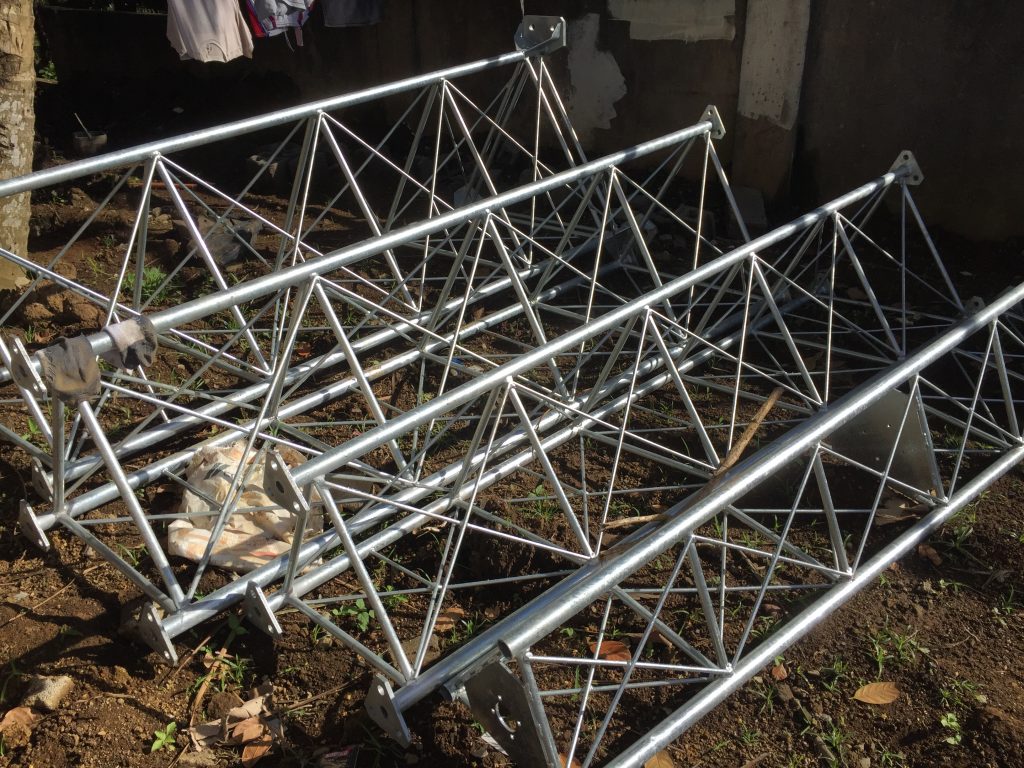 4 segments 3 m each
4 segments 3 m each
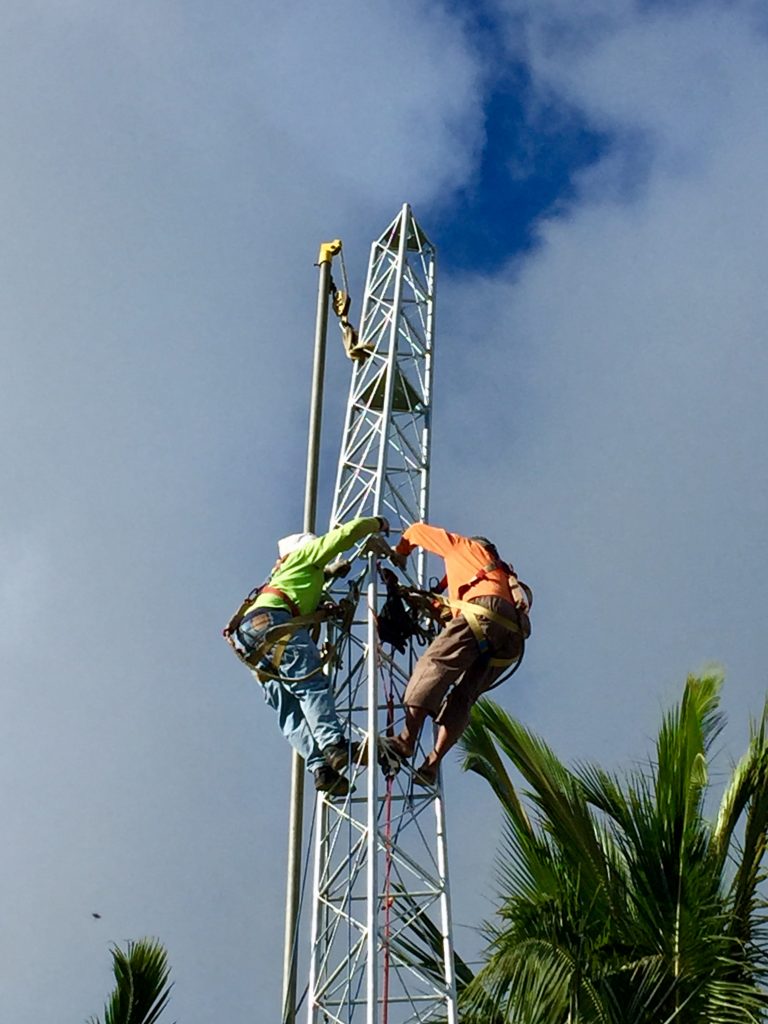 The last segment put in place
The last segment put in place
For digital modes I am using fldigi on a MacBook and the IC-7300 built-in USB interface. This is my running configuration:
Finally the new IC-7300 arrived, and I am still in the process to get familiar with it. I could not resist, as my IC-718, though reliable, is quite “outdated” in its technology, developed more than a decade ago.
Unfortunately, the first IC-7300 unit I picked up from the retailer in Singapore, had a DOA (defect on arrival): the CW keyer always sending dashes. Luckily, there was a second unit available, and it was exchanged without any problems.
Now the new unit is in operation for a week and doing its job without any problems. Size and weight are the same as my IC-718, but the features are not comparable, and it is a real advance in technology. The menus are intuitive and signal reception is excellent, as I can adjust all parameters – gain, filter bandwidth and response, audio processing etc. – according to the actual band conditions.
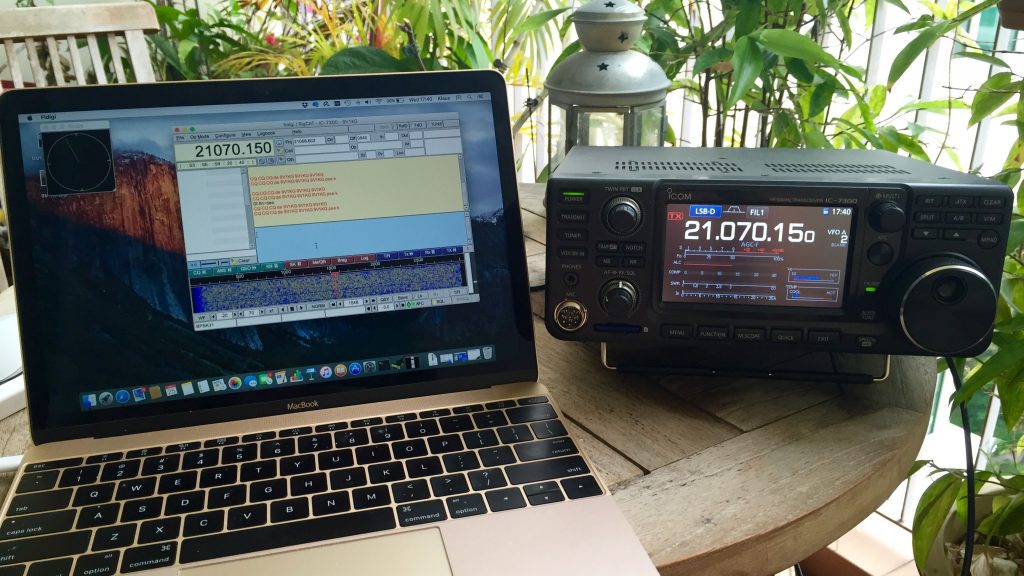
Two days ago, I setup the configuration for digital modes, connecting my Apple MacBook via USB, using fldigi and the IC-7300 built-in USB sound interface and serial control. So there is no need for any additional interface box, just one USB connection between computer and radio. It works fine, and I was able to make my first contacts in PSK-31.
Minami-Tori-shima, also known as Marcus Island belong to the easternmost territory of Japan on the pacific plate past the Japan trench. It is an isolated Japanese coral atoll in the northwestern Pacific Ocean, located some 1,848 km southeast of Tokyo and 1,267 km east of the closest Japanese island, South Iwo Jima of the Ogasawara Islands, and nearly on a straight line between mainland Tokyo and the United States’ Wake Island, 1,415 km further to the east-southeast. (Source: Wikipedia)
Before my first radio contacts with JD1BOW and JG8NQJ/JD1, I even didn’t know that Japan has a couple of small island so remote from the main island.
For my amateur radio activities on the HF bands I only have a 3.6 m wide balcony available for antennas. After some study I decided to experiment with a shortened dipole for the 15 m band. The full size 21 MHz half wave dipole would require a span of approx 7 m, therefore I searched for a solution to shorten the full size length by 50 percent.
Finally I decided for a linear loaded dipole; the layout and resulting dimensions are shown below.
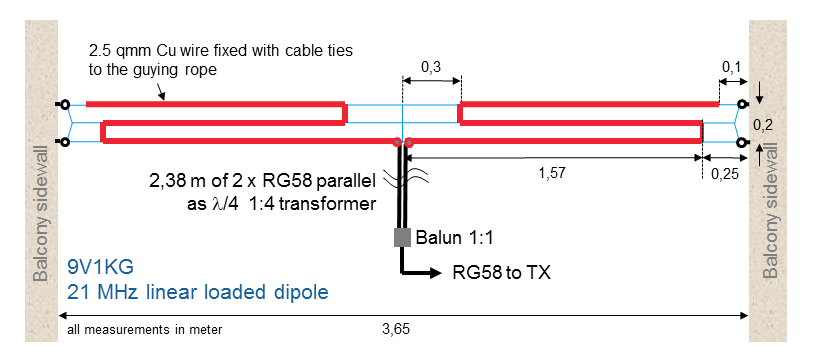
First measurements at the resonance frequency showed a low input impedance at the dipole’s feed point with values around 10 Ohm. The theoretical radiation resistance of a 2 x 1.6 m short dipole would be 10 Ohm, so it is an indication of low losses in the system. In order to match the antenna to the 50 Ohm of the transceiver, I use a quarter wave transmission line transformer consisting of two parallel connected 50 Ohm coaxial cables.

After fine tuning the length of the antenna wires, I achieved an SWR below 1.5 for the CW segment of the 15 m band.
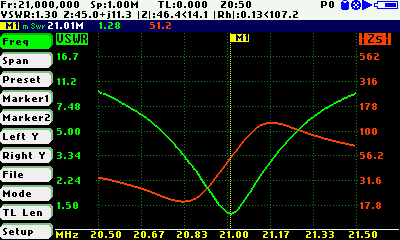
The antenna’s bandwidth is around 200 kHz; I could already work DX stations around the world.
Dipole feed point and 1:1 balun